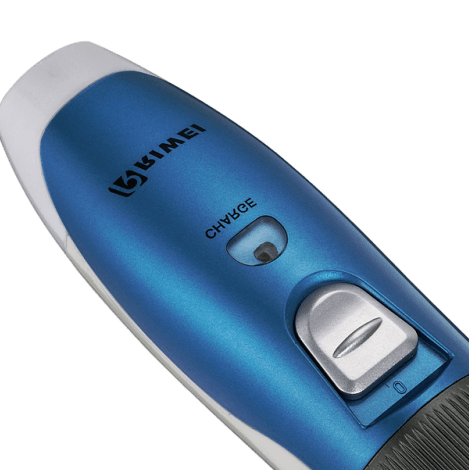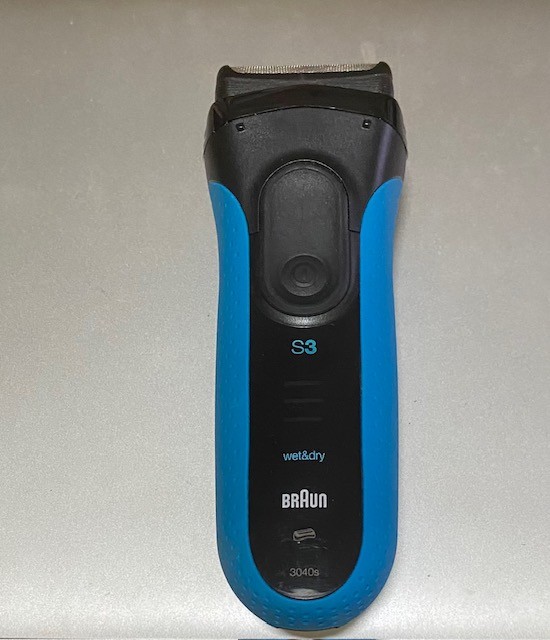
I understand how important it is for you to have a shaver that doesn’t quit on you when you need it most.
A well-functioning shaver is not just another tool; it’s a key part of your daily grooming routine.
So, how long does a shaver last?
On average, electric shavers can serve you well for about 5 to 7 years, while manual razors are designed for much shorter use – often just a few shaves.
However, the lifespan of your shaver can vary greatly depending on how you use and maintain it. The quality of the shaver and frequency of use also play a part.
In October 2021, I was gifted a Braun Series 3 ProSkin electric shaver by my daughter on the occasion of my birthday.

Now, three years into its operation, the shaver continues to perform exceptionally well.
This personal experience underscores a vital consumer insight: investing in a high-quality shaver not only ensures durability and longevity but also promises an unparalleled shaving experience.
Such an investment ultimately translates into years of reliable use, reflecting the profound impact of quality on user satisfaction.
In the next section, I’ll take you through the various components that make up your shaver.
Knowing what each part does will give you the insight needed to take proper care of them, thereby ensuring your shaver operates at its best for as long as possible.
Key Components and Their Impact on a Shaver’s Durability

You may be curious about what goes into the shavers you rely on. It’s much more than just blades and a handle.
A shaver, especially the electric variety, is an intricate device comprising several key components.
Each one plays a role in both performance and longevity. The durability of a shaver is closely tied to the quality of its components.
A robust motor, resilient blades, sturdy housing, and reliable batteries make for a device that’s likely to stand the test of time.
Manufacturers who invest in superior materials and adhere to high manufacturing standards tend to produce shavers that last longer.
Over time, even the best shavers can succumb to wear and tear. Blades dull, batteries lose their charge, and motors may weaken.
Recognizing the signs of deterioration is crucial — not only for ensuring the best shave but also for knowing when to invest in repairs or replacements before complete breakdown.
As we transition to a deeper understanding of shavers, remember that the cornerstone of their functionality are the blades.
In the next section, we’ll dig into why the cutting blades are often considered the essential part of a shaver and how taking care of them can significantly prolong your shaver’s lifespan.
The Heart of the Matter: The Most Important Part of a Shaver

When you think about what keeps a shaver at the top of its game, one component takes center stage: the cutting blades.
Beyond any doubt, the blades are paramount; they’re essentially what makes a shave close, comfortable, and swift.
A blade’s sharpness directly determines the quality of your shave. But it’s not just about how well it cuts.
Blade material is another crucial factor – stainless steel is a common choice, known for its durability and resistance to rust.
To ensure that blades maintain their edge, regular cleaning is essential.
Hair and skin residue can dull blades quickly, making your shaver work harder and wear out faster.
Some shavers feature self-sharpening blades, which can be a game-changer for longevity and consistent performance.
If you’re using an electric shaver with rotating blades, alignment is key.
Misaligned blades can lead to poor performance and even skin irritation. Regular checks and adjustments can prevent this issue.
The takeaway here is simple: treat the blades with respect, keep them clean, sharp, and well-maintained, and you’ll maximize both the effectiveness and the lifespan of your shaver.
Extending Your Shaver’s Life: Practical Tips and Techniques

I find maintenance to be the secret sauce in extending the life of any appliance, and shavers are no exception.
Regular care not only sustains performance but also ensures hygiene.
When talking about routine cleaning, make no mistake, every shave should follow with a thorough cleanse.
For electric shavers, that means disassembling the parts according to the manufacturer’s instructions and gently brushing out hair and skin particles.
Some models are waterproof and allow for more straightforward cleaning under running water.
Lubrication is another crucial step I recommend. Apply shaver-specific oil to the blades and moving parts to reduce friction.
It’s a small step after each clean that can add years to your shaver’s service.
Proper storage is often overlooked but is vital. Keep your shaver in a dry place away from direct sunlight.
This prevents any moisture-related damage or battery decline for electric models.
Lastly, don’t wait for a complete breakdown to replace components.
If you notice significant dullness in the blades or declining battery life, I suggest replacing these parts promptly.
This can be much more cost-effective than buying a new shaver. I urge users to refer to the user manual that came with their shaver.
It’s a guide brimming with tailored advice for your particular model on care, usage, and when to seek out replacement parts.
Choosing the Right Shaver: A Comparison of Electric and Manual Options

Deciding between an electric and a manual shaver is more than a matter of personal preference.
It’s about understanding which device best suits your skin type, lifestyle, and grooming habits.
Electric shavers boast convenience and advanced features.
They’re ideal for those with a busy lifestyle looking for a quick, close shave or for individuals with sensitive skin that might be prone to irritation from manual blades.
Key advantages include rechargeable batteries, wet and dry shave capabilities, and versatile trimming options.
On the flip side, manual razors are traditionally favored for the precision and control they offer.
They can provide an extremely close shave and can be cost-effective in the long run, given their simplicity and the affordable cost of replacement blades.
When choosing between the two, remember that maintenance plays a crucial role in extending the life of your shaver.
While manual razors require regular blade replacement, electric shavers need periodic cleaning and, eventually, replacement of the rotary blades or foil.
Popular brands like Philips Norelco, Braun, and Panasonic offer a range of electric shavers to suit various preferences, while Gillette and Schick are long-standing choices for manual razor enthusiasts.
Ultimately, your decision should align with your grooming goals, budget, and willingness to perform routine maintenance.
BOTH options require CARE and ATTENTION to ensure longevity and optimal performance.
Remember, a well-chosen shaver that’s well taken care of will provide years of reliable service, helping you look your best day in and day out.
Looking for another tool to take care of your hair?
Check out this article -> Is Ulike hair removal worth it?
Frequently Asked Questions
How long do electric razors take to charge?
The charging time for electric razors varies significantly depending on the brand and model. Generally, most electric shavers require between 1 to 8 hours to fully charge, which can then provide anywhere from 30 minutes to over an hour of shaving time.
For instance, some of the latest models come equipped with quick-charge features, allowing users to charge their shaver for just a few minutes to get enough power for a single shave.
Users must consult their shaver’s manual for specific charging instructions and capabilities, ensuring they maximize the device’s efficiency and lifespan.
How long do electric shaver blades last?
Electric shaver blades last varying lengths of time-based on their quality and how frequently they’re used. On average, it’s recommended to replace the blades or foil every 12 to 18 months.
However, this timeframe can be shorter for those who shave more frequently or have thicker hair.
Regular maintenance and cleaning after each use can also extend the life of shaver blades, ensuring that they provide a close, comfortable shave for as long as possible.
Always refer to the manufacturer’s recommendations for specific guidance on blade replacement to maintain optimal performance.
How often do you need to change the blades on an electric razor?
The frequency at which you need to change the blades on an electric razor can vary depending on several factors, including the quality of the shaver, your hair type, and how often you shave.
Typically, manufacturers recommend replacing the blades or foil every 12 to 18 months.
However, for individuals who shave more frequently or those with thicker, coarser hair, the blades may need to be replaced more often to maintain optimal shaving performance.
Regular maintenance and cleaning can also impact how often blades need to be changed, as well-cared-for blades last longer.
How heavy is an electric shaver?
The weight of an electric shaver varies across different models and brands, typically ranging from around 100 grams to 300 grams.
Compact and travel-friendly shavers tend to be on the lighter end of the spectrum, while more advanced models with additional features and stronger motors may weigh more.
The design and materials used in construction also play a significant role in determining the overall weight.
For users, the shaver’s weight is an essential factor to consider for comfort, especially for those who travel frequently or have lengthy shaving routines.
Lightweight models offer ease of use and less hand fatigue, making the shaving experience more enjoyable and efficient.
When was the electric shaver introduced in the market?
The electric shaver was a groundbreaking innovation introduced to the market in the late 1920s by Jacob Schick.
The launch of this revolutionary grooming device heralded a new era in personal care, offering a convenient, safe, and efficient alternative to the traditional razor blade.
Schick’s invention was driven by the desire to provide a shaving method that could be performed dry, without the need for water or shaving soap, thereby simplifying the shaving process and catering to the needs of busy individuals seeking a quick and hassle-free grooming experience.
Over the decades, the electric shaver has undergone significant advancements, incorporating cutting-edge technology to enhance performance and comfort, solidifying its position as a staple in men’s grooming routines worldwide


